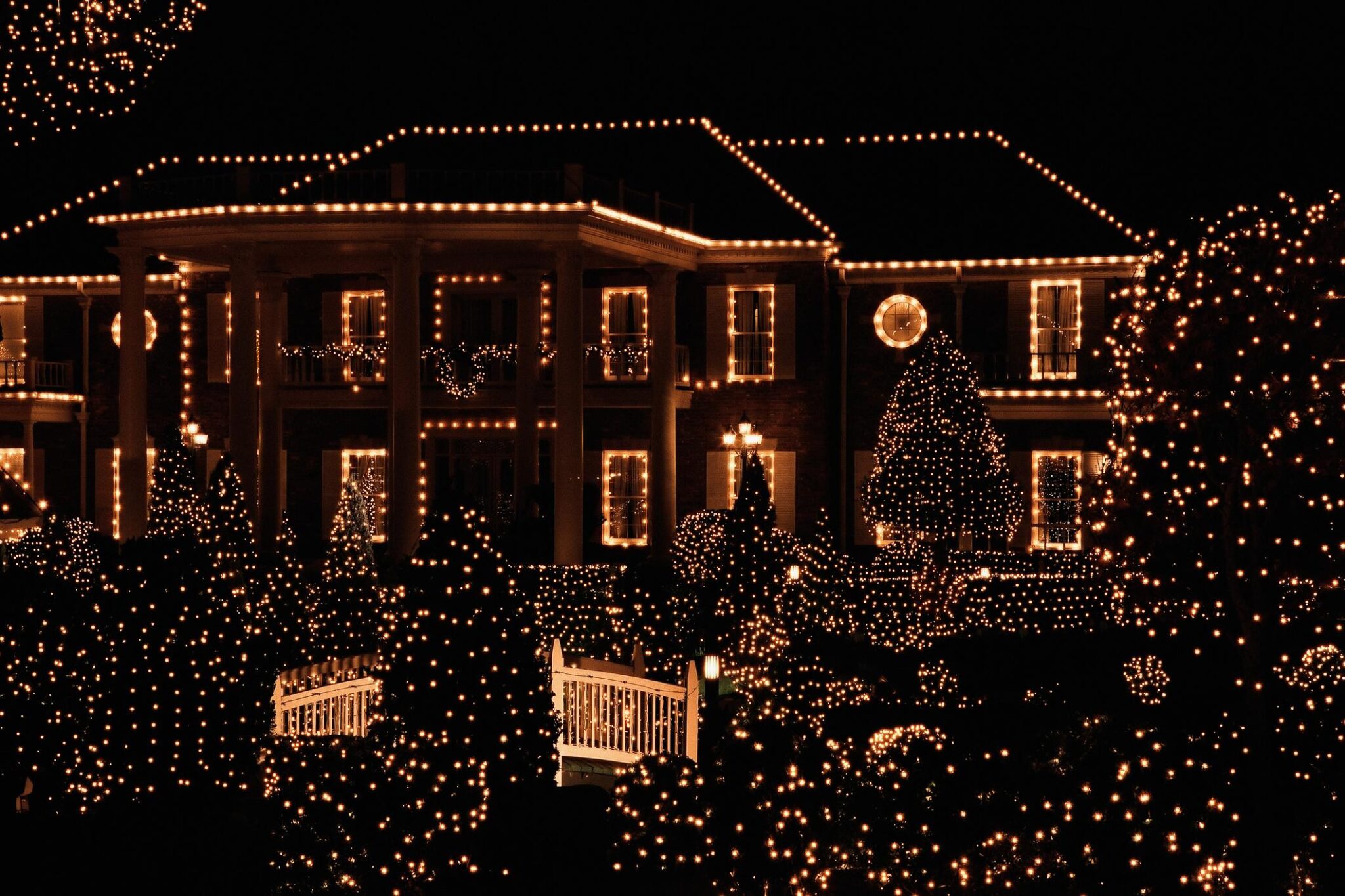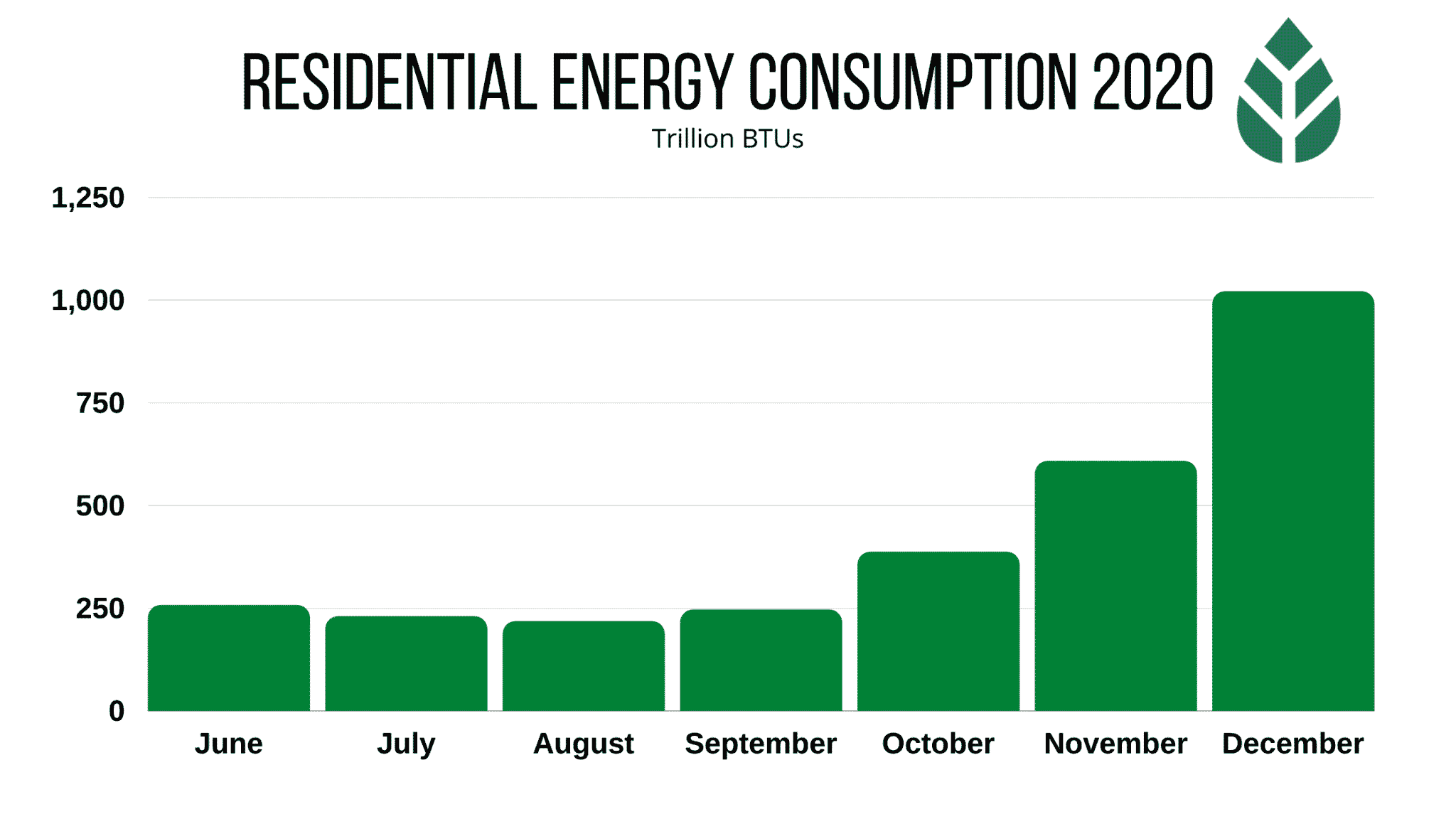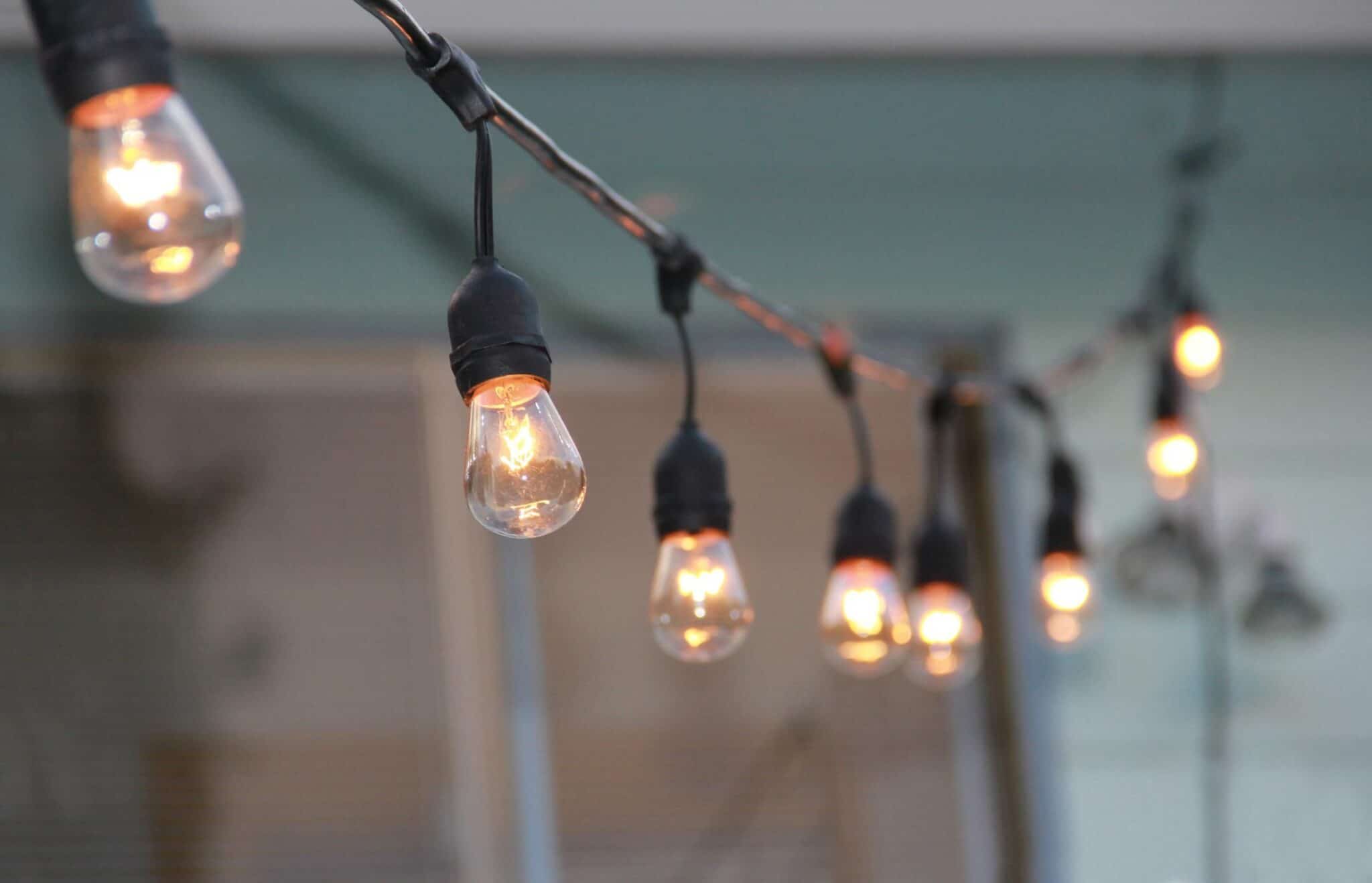
Powering Your Holiday With Solar
Curious about how much energy it takes to power your home through the holiday season?

Image Source / Getty Images
The holidays have arrived, and only a Grinch would let December pass without putting up some lights. But between the lights on the trees, roofs, walkways, yards and home, a sneakily large electricity bill often lies on the other side of the New Year.
So, how much additional electricity do we use during the holidays for decorations? Could you offset that with solar panels? Let’s find out.
Average Energy Consumption During the Holidays
In 2020, the average amount of electricity consumed by U.S. residential utility customers was 10,715 kilowatt hours (kWh), which calculates to about 893 kWh per month. In December, however, you can expect that figure to sit near or above 1,000 kWh, a 10% increase over the average month. As you can see last year, December energy consumption topped that of even peak summer months.

Data courtesy of the Energy Information Administration (EIA)
So, what accounts for this spike, exactly? Besides the cold weather (which can be extreme, as we saw in last year’s winter), holiday light shows and entertainment can add a surprising amount to your energy usage. Before we dive in, let’s clarify how to measure electricity use. It’s fairly simple when you break it down.
Electricity used to power your home is measured in kilowatt-hours (kWh), a unit of energy equal to one kilowatt (1,000 watts) of power sustained for one hour. Think about kW as horsepower, and kWh as the speed of the car.
Say you had a 100-watt light bulb. By definition, a light bulb is labeled 100-watt because it requires 100 watt-hours of energy to run for one hour. If you left this light on for 10 hours, you’d see 1 kWh added to your electricity bill.
Outdoor Energy Use
Let’s apply this math to basic outdoor string lights as an example; an average 100-foot string consists of 104 5-watt bulbs. In total, the string is 520 watts, meaning, the string requires 520 watt-hours of electricity to run for just one hour. For context, 500 watts of power would be enough to power a small refrigerator, and maybe a few laptops and cell phones.

Incandescent Light Bulbs Marie LaFauci / Getty Images
It would take about 10 of these light fixtures (or similar lights) strung across a roof to cover it. Think about lights that might be in the yard or around trees as well. One hour of powering 10 of these strings would require 5.2 kilowatt-hours (equal to 5,200 watt-hours) of energy.
For context, the average retail price of electricity in December of 2020 was 10.37 cents per kilowatt hour, meaning that 5.2 kWh of electricity costs the average homeowner just north of 50 cents. This might not sound like much, but this is 50 cents for every hour that you keep holiday lights on outside. Over the course of the month, if you keep your lights on for 6 hours a day (with timed lights), that’ll wind up costing around $100 for powering string lights alone.
If you kept the lights on all day, the bill from your outdoor decorations alone would be near $400 at the end of the month.
Indoor Energy Use
Most indoor string lights are LED these days, so one standard strand of lights wrapped around a Christmas tree or hung across a fireplace will be closer to just five or 10 watts in total. Let’s say you purchase 10 sets of standard 10-watt LED lights to decorate with.
Ten sets of 10-watt strands comes out to 100 watt-hours of energy for every hour of use. Let’s do the math so see what that would cost per hour at a rate of 10.37 cents per kilowatt hour. First, convert watt-hours to kilowatt-hours…
- 100 Wh x (1 kWh / 1,000 Wh) = .1 kWh
- 10.37 cents per hour x .1 kWh = 1.037 cents per hour
Doesn’t sound too bad, right? Let’s figure out how much this would cost if the lights were on throughout the whole month of December.
1.037 cents per hour x 24 hours x 31 days = 771.53 cents, or $7.73.
This really shows the difference that LED bulbs can make compared to incandescent bulbs, but home energy efficiency can get even better.
Types of Solar Decorations
We completely respect the fact that you’re likely still using your holiday string lights from the 2010s or even before then. Reusing is (almost) always a more sustainable option than purchasing something new.
However, if you’re on the market for some new holiday lights this season, consider solar-powered lights. Here are a few of our favorite solar lights, fit for any holiday decorations. Modern solar lights come with built-in rechargeable batteries so you don’t need to deal with extension cords or higher energy bills.
- Solar Christmas Lights: These 72-foot solar Christmas lights are perfect to wrap around a tree or light your patio or yard. The string of lights comes with a panel attached to 6 feet of cord, so even if your lights are being used indoors, you can still put the panel outside.
- Solar String Lights: A great replacement for incandescent string lights, solar string lights charge from a small panel a few inches across that can be left on a roof or staked into the ground.
- Solar Lanterns: Useful in all seasons, solar lanterns make a great holiday decoration. Useful for camping, porches, patios and more, these rechargeable lanterns provide warm light in any situation.
Pros and Cons of Solar Decorations
Of course, solar lights have their own imperfections. Most notably, solar lights are a little more expensive on the front-end. Here’s a complete list of pros and cons to consider before choosing solar decorations.
|
Pros of Solar-Powered Holiday Decorations |
Cons of Solar-Powered Holiday Decorations |
|
Runs on free, clean energy |
Slightly more expensive to purchase |
|
No extension cords out outlet access are necessary |
Batteries decrease in efficiency over time |
|
Usually made with LEDs, which are more efficient than incandescent bulbs |
Must have a good amount of sunlight to charge |
How Many Solar Panels Would It Take To Power Your Home in December?
Now for the fun part. With the rough 10% spike in December energy use we accounted for, we can calculate how many solar panels the average homeowner in the U.S. would need to power their holidays. Let’s assume that with your regular energy needs and the power required for your decorations, you used 1,000 kWh of electricity in December.
Keep in mind that you can’t add or subtract panels based on seasonal energy needs, so assuming this is your highest month of energy consumption, you’d want to make sure your solar array can meet these needs. This means you’d need a system that can produce 12,000 kWh per year.
Figuring out how many solar panels you need to power a home can be complex, but to simplify: Dividing the annual kWh by 1,200 to get the kilowatts of solar capacity needed, we can calculate that you’d need roughly a 10kW system. The best solar panels have a wattage of around 350W, so if you invested in high-quality panels, you’d need around 30 panels to power your home through the holidays (and the rest of the year).
If you’re interested in learning more about how solar can meet your home’s holiday energy needs and more, you can reach out to a solar installer near you.
Karsten Neumeister is a writer and renewable energy specialist with a background in writing and the humanities. Before joining EcoWatch, Karsten worked in the energy sector of New Orleans, focusing on renewable energy policy and technology. A lover of music and the outdoors, Karsten might be found rock climbing, canoeing or writing songs when away from the workplace.

 233k
233k  41k
41k  Subscribe
Subscribe 